High Potency Cannabis
CERP: A pioneer in bringing awareness and proposing policy solutions to the health risks of high THC products (high potency cannabis).
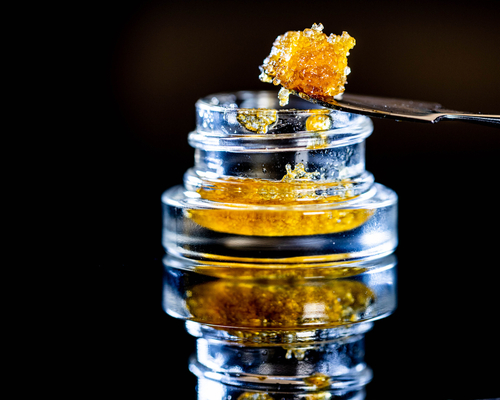
In the first years of legalization in Washington State, there was little awareness or concern about cannabis manufacturers’ development of new cannabis products containing much higher levels of THC than what had been historically found in the plant.
These products, widely available now, were recognized by CERP as a public health threat as early as 2016. CERP scientists started publishing their first commentaries and short reports in 2017, warning about the health risks of wide availability of manufactured products (see selected papers below).
2020 Consensus Statement and Report
In 2020, CERP Director Beatriz Carlini, PhD, MPH, was invited to chair a workgroup of Washington State scientists who convened for six months and published the first consensus statement and report in the nation on the health risks of highly concentrated THC in cannabis products.
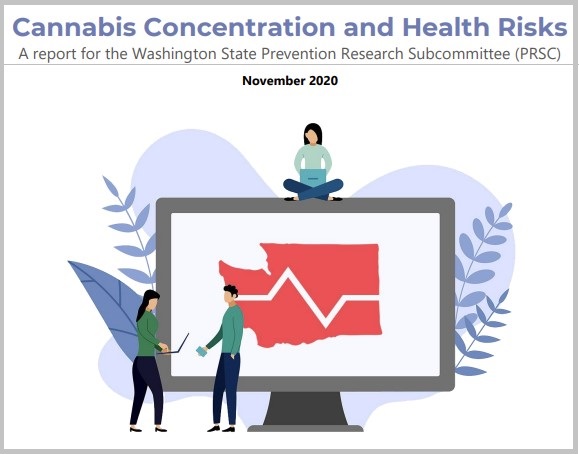
This consensus statement and report, Cannabis Concentration and Health Risks: A Report for the Washington State Prevention Research Subcommittee (PRSC), was developed by research scientists from the University of Washington (UW) and Washington State University (WSU) with the intent of providing policy makers with a summary of the current evidence on topics of public health importance related to cannabis concentration.
2021 High THC Policy Report to the Washington Legislature
In 2021, the Washington State Health Care Authority was directed by the legislature (ESSB 5092 (2021)) to contract with ADAI’s CERP to develop recommendations for state policies related to cannabis concentration and mitigating detrimental health impacts.
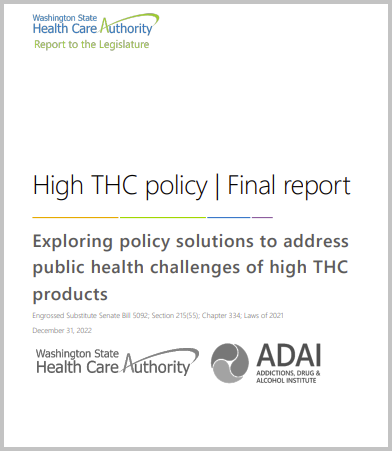
The final report to the legislature, High THC Policy: Exploring Policy Solutions to Address Public Health Challenges of High THC Products, published in December 2022, describes recommendations for state policies based on the perspectives of WA stakeholders, research evidence on public policies designed to mitigate harms associated with non-medical use of high THC cannabis products and other legally commercialized health-compromising products, and cannabis policies that have been considered or adopted in North America.
2022 ADAI Symposium: High THC Cannabis in Legal Regulated Markets
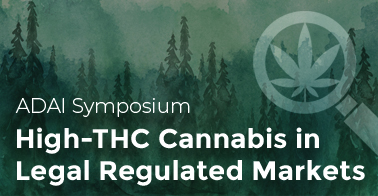
On September 16, 2022, CERP hosted a day-long symposium, High THC Cannabis in Legal Regulated Markets, which focused on the short and long-term risks of high-THC products, including conversations about policy-focused solutions and ways to increase awareness through education campaigns for providers, parents, and youth. The panel of speakers featured a range of international, national, and regional experts, as well as local policymakers. The recordings and slides from this event are available here.
More than 200 people attended either virtually or in-person. While the goal of this symposium was to educate Washingtonians on the challenges posed by high-THC products and possible solutions to address it, our collective knowledge reached far and wide to include registrants from five other countries and nine other US states.
2024 Report and Recommendations of the High Potency Cannabis Think Tank
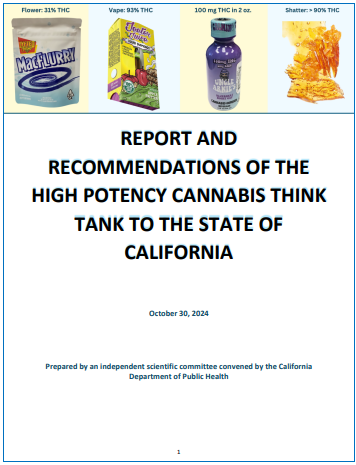
In 2023, the CERP director was invited to be part of an independent panel of 13 U.S. scientist and clinician cannabis experts convened by the California Department of Public Health (CDPH) to analyze the health impacts, including increased risk of dependency and serious mental health conditions, of the highly-potent cannabis products available in California and elsewhere and provide policy recommendations to mitigate risks – particularly for vulnerable populations. As a result of this collective effort a Report and Recommendations of the High Potency Cannabis Think Tank to the State of California was released to the public in October of 2024.
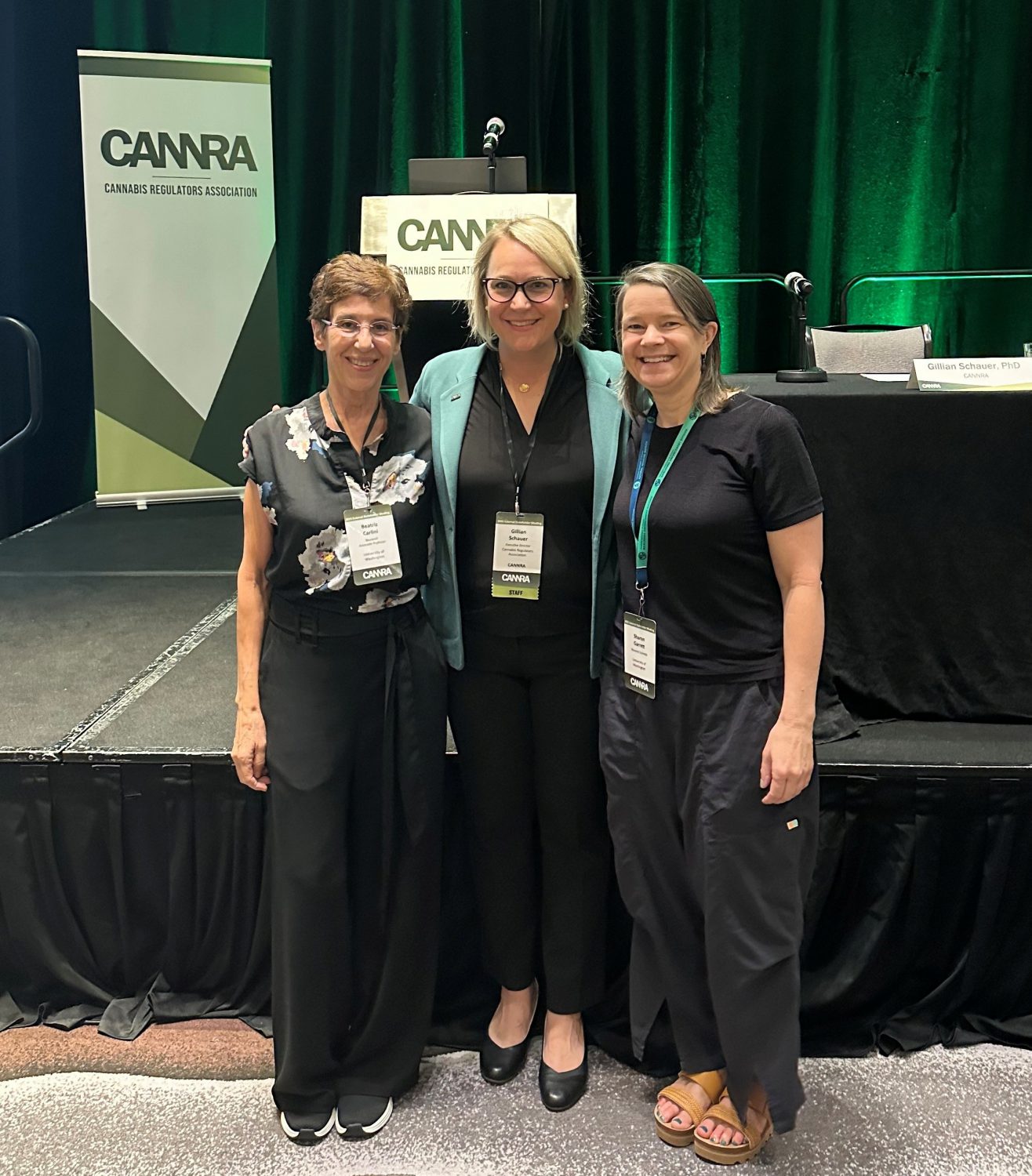
2025 Cannabis Regulators Association (CANNRA) External Stakeholder Meeting panel participation
Dr. Carlini was an invited panelist at the 2025 CANNRA External Stakeholder Meeting in Denver, CO, addressing the topic “Innovative policy ideas for high concentration THC products.”
Selected Publications
Throughout these years, CERP has been active in publishing articles in peer-reviewed journals about this topic. Find a list of select articles below. (Need help getting a copy? Email ADAI librarian Meg Brunner: meganw@uw.edu).
- Threaten, distract, and discredit: Cannabis industry rhetoric to defeat regulation of high-THC cannabis products in Washington State. Carlini BH, Kellum LB, Garrett SB, Nims LN. Journal of Studies on Alcohol & Drugs 2024 May;85(3):322-329. doi: 10.15288/jsad.23-00277.
- Identifying policy options to regulate high potency cannabis: A multiple stakeholder concept mapping study in Washington State, USA. Carlini BH, Garrett SB, Matos P, Nims LN, Kestens Y. International Journal of Drug Policy 2024;123:104270. doi: 10.1016/j.drugpo.2023.104270.
- Do not let the ideal be the enemy of good enough regulation. Hall W, Leung J, Carlini BH. Addiction 2023;118(6):1009-1010. doi: 10.1111/add.16201.
- How should policymakers regulate the tetrahydrocannabinol content of cannabis products in a legal market? Hall W, Leung J, Carlini BH. Addiction 2023 Jun;118(6):998-1003. doi: 10.1111/add.16135.
- Anytime is the right time: A content analysis of marijuana ads in freely distributed print media in Western Washington State, USA. Carlini BH, Harwick R, Garrett S. Substance Use & Misuse 2020;55(5):806-817. doi: 10.1080/10826084.2019.1703749.
- Potency increase, product development and marijuana marketing in times of legalization. Carlini BH. Addiction 2017 Dec;112(12):2178-2179. doi: 10.1111/add.13945. PMID: 29105921.
- Beyond joints and brownies: Marijuana concentrates in the legal landscape of WA State. Carlini BH, Garrett SB, Harwick RM. International Journal of Drug Policy 2017;42:26-29. doi: 10.1016/j.drugpo.2017.01.004.
